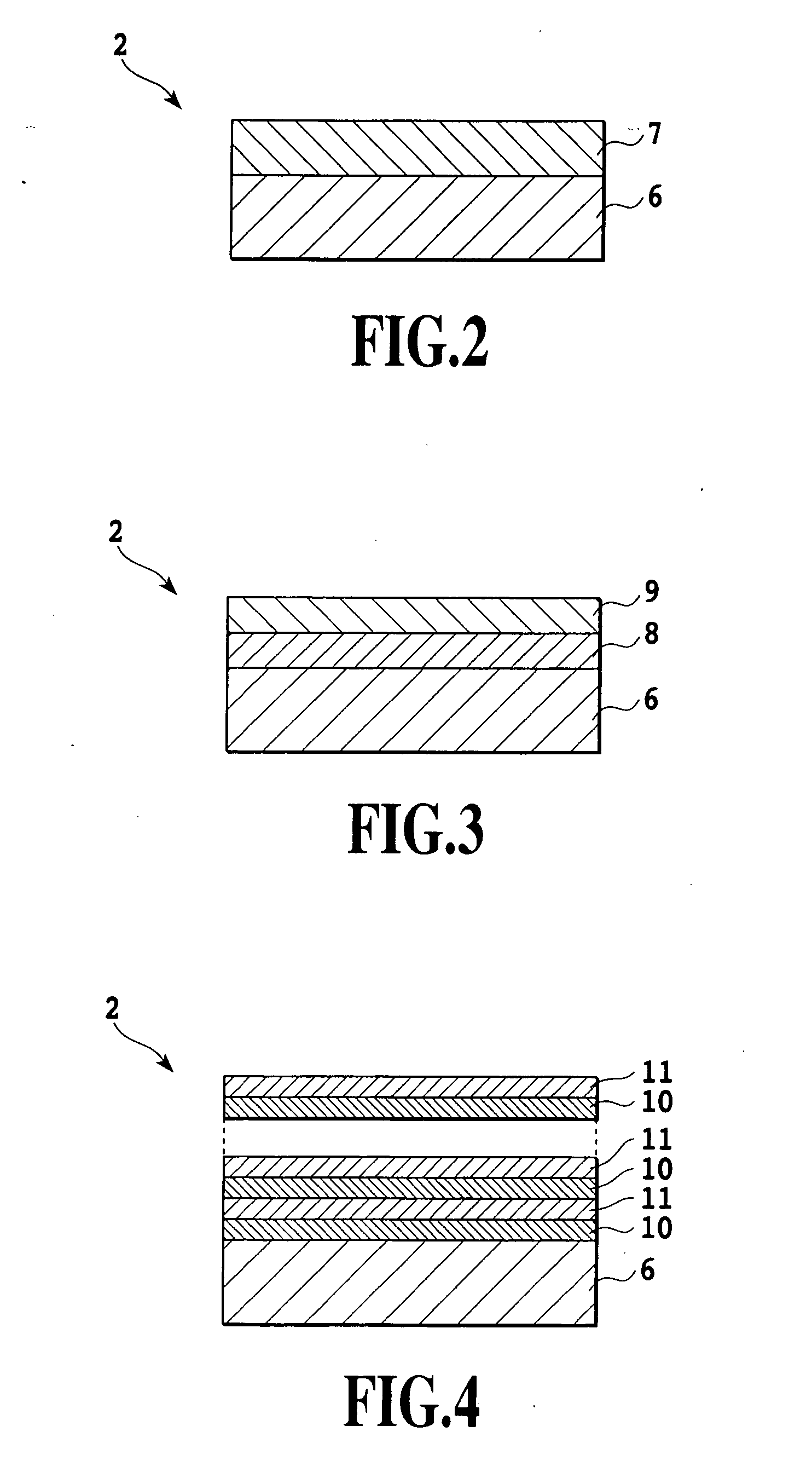Infrared sensor ic, and infrared sensor and manufacturing method thereof
- Summary
- Abstract
- Description
- Claims
- Application Information
AI Technical Summary
Benefits of technology
Problems solved by technology
Method used
Image
Examples
first embodiment
[0126] Using the MBE method, non-doped InAs0.23Sb0.77 of 2 μm was grown on a GaAs substrate. The film characteristics of a thin InAsSb film were measured using the van der Pauw method, and an electron mobility of 35,000 cm2 / Vs at room temperature, a sheet resistance (device resistance) of 20 Ω, and a carrier density of 1×1017 atoms / cm3 were obtained. A compound semiconductor sensor was then fabricated by using this thin compound semiconductor film. First, for device separation, mesa etching was performed for the compound semiconductor film deposited on the GaAs substrate, and then, the entire surface (the GaAs substrate and the compound semiconductor film deposited on the substrate) was covered with an SiN protective film. Following this, only the electrode portions on the deposited SiN protective film were opened as windows, Au / Ti was deposited using EB evaporation, and electrodes were formed using the lift off method. The light-receiving areas were designed to be 35 μm×115 μm. A c...
second embodiment
[0129] Using the MBE method, non-doped InSb of 1 μm and non-doped InAs0.23Sb0.77 of 2 μm were grown on a GaAs substrate in the named order. The film characteristics of a thin compound semiconductor layer were measured using the van der Pauw method, and an electron mobility of 51,000 cm2 / Vs at room temperature, a sheet resistance (device resistance) of 20 Ω, and a carrier density of 9×1016 atoms / cm3 were obtained. A compound semiconductor sensor was then fabricated by using this thin compound semiconductor film. First, for device separation, mesa etching was performed for the compound semiconductor film deposited on the GaAs substrate, and then, the entire surface (the GaAs substrate and the compound semiconductor film deposited on the substrate) was covered with an SiN protective film. Following this, only the electrode portions on the deposited SiN protective film were opened as windows, Au / Ti was deposited using EB evaporation, and electrodes were formed using the lift off method....
third embodiment
[0132] Using the MBE method, InAs of 5 nm and GaSb of 3 nm were alternately grown on a GaAs substrate by fifty cycles, and a superlattice structure was obtained. The film characteristics of the superlattice structure according to a third embodiment were measured using the van der Pauw method, and an electron mobility of 8,000 cm2 / Vs at room temperature, a sheet resistance (device resistance) of 90 Ω, and a sheet carrier density of 2.6×1013 atoms / cm2 were obtained. A compound semiconductor sensor was then fabricated by using this thin compound semiconductor film. First, for device separation, mesa etching was performed for the compound semiconductor film deposited on the GaAs substrate, and then, the entire surface (the GaAs substrate and the compound semiconductor film deposited on the substrate) was covered with an SiN protective film. Following this, only the electrode portions on the deposited SiN protective film were opened as windows, Au / Ti was deposited using EB evaporation, a...
PUM
 Login to View More
Login to View More Abstract
Description
Claims
Application Information
 Login to View More
Login to View More - R&D
- Intellectual Property
- Life Sciences
- Materials
- Tech Scout
- Unparalleled Data Quality
- Higher Quality Content
- 60% Fewer Hallucinations
Browse by: Latest US Patents, China's latest patents, Technical Efficacy Thesaurus, Application Domain, Technology Topic, Popular Technical Reports.
© 2025 PatSnap. All rights reserved.Legal|Privacy policy|Modern Slavery Act Transparency Statement|Sitemap|About US| Contact US: help@patsnap.com



